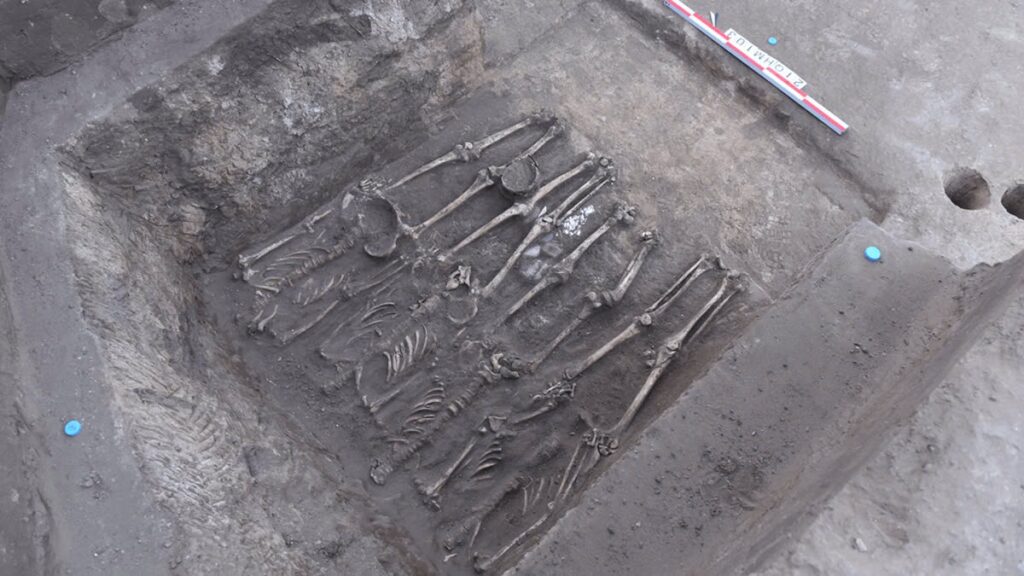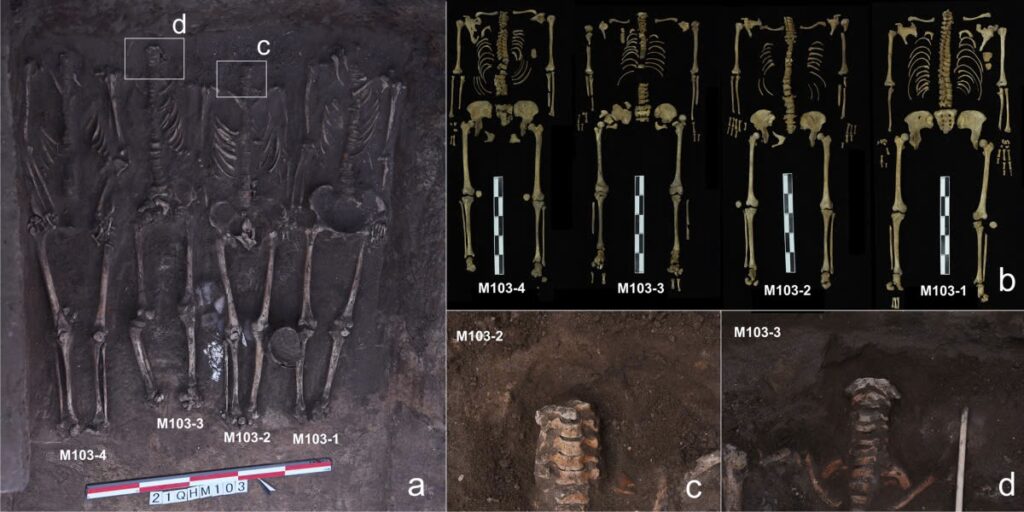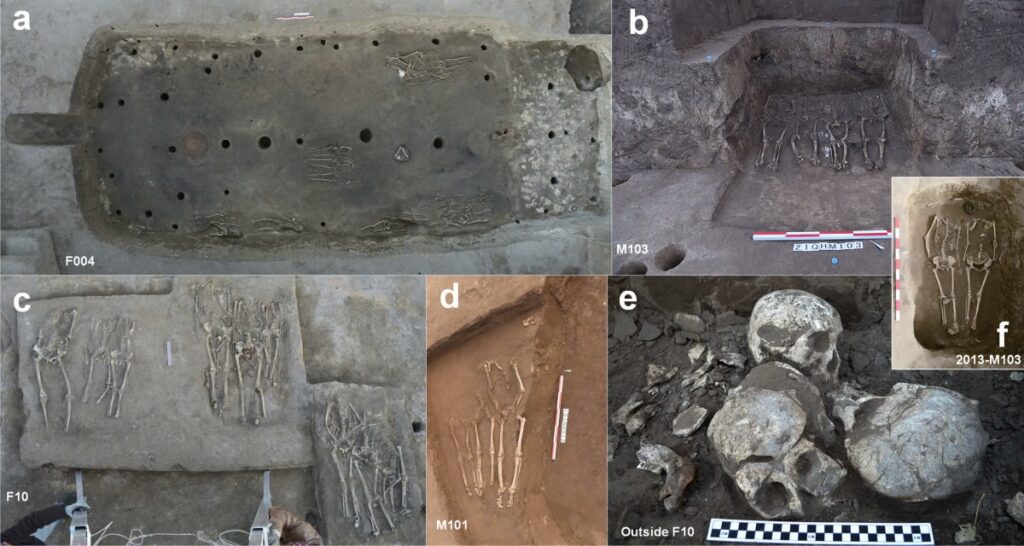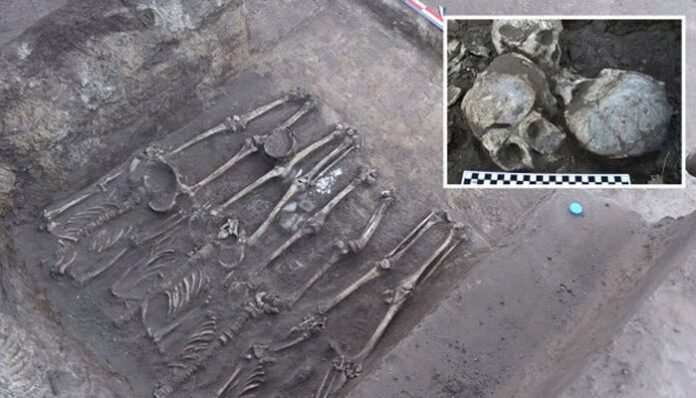A Neolithic Horror Unearthed

In the annals of archaeological discoveries, few findings have been as chilling as the mass graves uncovered at the Honghe site in China. Dating back approximately 4,100 years, this Neolithic site has revealed what researchers now believe to be the largest known headhunting massacre in ancient Chinese history.
The Gruesome Details

The story begins with the discovery of 41 headless skeletons, part of a larger excavation that has unearthed 68 bodies in total. What makes this find particularly haunting is the exclusive targeting of women and children, their remains bearing the telltale marks of a brutal and methodical decapitation.
Piecing Together the Puzzle
The Weapons and the Wounds

Detailed analysis of the skeletal remains paints a grim picture of the massacre. Cut marks across neck vertebrae, some bearing distinctive V- and U-shaped incisions, suggest the use of bone-handled knives with stone blades – tools consistent with the technology of the Honghe area at the time.
A Single, Horrific Event

Perhaps most chilling is the revelation that 32 of the 41 beheadings occurred in a single event, pointing to a coordinated and large-scale attack on the settlement.
Theories Behind the Massacre
Ritual or Revenge?

Researchers propose two main theories for this ancient atrocity:
- A ritual massacre, possibly targeting women and children for their perceived spiritual power or to fulfill a specific ceremonial requirement.
- An act of extreme violence between rival settlements, with the attackers choosing victims to inflict maximum emotional damage on the community.
The Aftermath
The discovery of defensive trenches around the site suggests ongoing conflicts with neighboring groups. Researchers speculate that the men of the settlement, possibly away during the attack, returned to find this horrific scene and buried their loved ones before abandoning the site forever.
A Window into Ancient Practices

This grim discovery provides invaluable insights into the practice of headhunting in Neolithic China, a custom more commonly associated with later periods in Southeast Asia and the Pacific Islands. It serves as a stark reminder of the complex and often violent nature of ancient societies, pushing the boundaries of our understanding of prehistoric human behavior.
As excavations continue, the Honghe site stands as a somber testament to a dark chapter in human history, challenging archaeologists and historians to unravel the mysteries of our ancient past.

